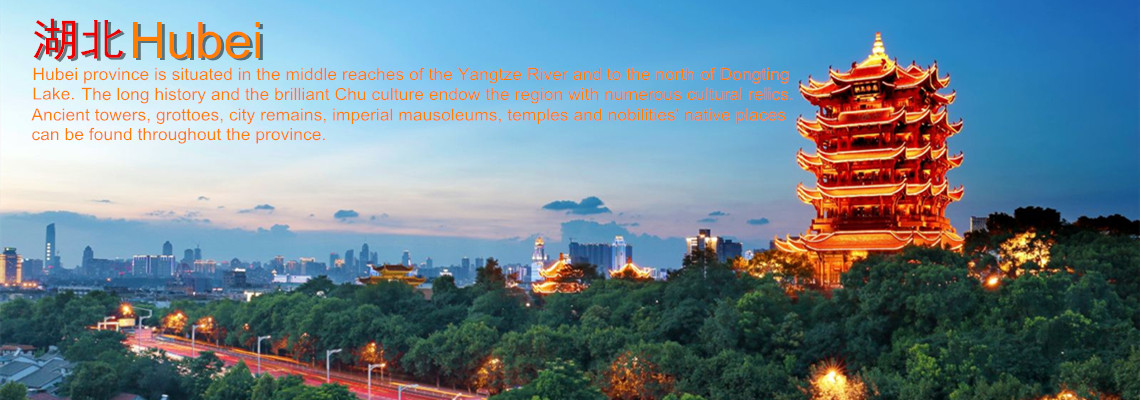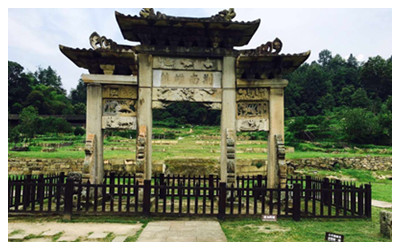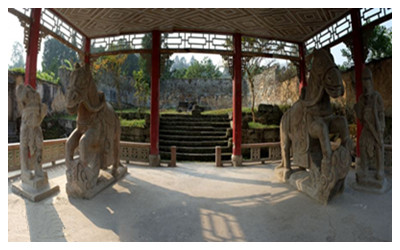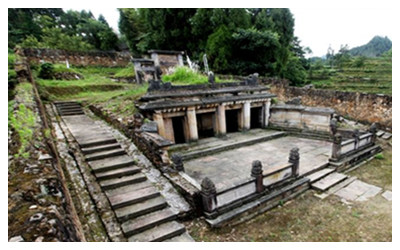Skype: neodalle-travel
Tel: +86 135 7447 2266
E-mail: sales@visitaroundchina.com

Structural Layout
The Site of Tangya Tusi Domain is sandwiched between the Tangya River and the Xuanwu Mountain. With a total area of 183 acres (74 hectares), it consisted of 3 streets, 18 alleys, and 36 courtyards in the past. There used to be government offices, shooting ranges, barracks, prisons, zoos, temples, and wells. At present, there are a great number of historical sites, while the roads of the Ming Dynasty (1368-1644), the archway presented by the imperial government, the tomb of the Chieftain Tan Ding, and the exquisite human and horse statues are best-preserved. Tourists can not only enjoy the magnificence of the imperial city, but also gain a basic knowledge of the Tusi culture.
 Stone Archway
Stone Archway
The imperial court bestowed a stone archway upon the Chieftain Tan Ding to commemorate his great military achievements in the third year (1623) of the reign of the Ming Emperor Xizong. Supported by four pillars, the archway has three openings. To the left side of the archway stands a stone lion which is solemn, spectacular, and well-preserved. Either side of the archway are inscriptions and relief sculptures that depict the Chieftain Tan Ding on a Cruise, fishermen, woodmen, farmers, scholars, natural scenery, legendary figures, and so on.
Human and Horse Statues
 Two human statues and two horse statues stand in front of the Stone Archway by the Tangya River. The horses were carved from a single piece of stone. The horse on the left is embellished with a rein, a bridle, and a saddle, with a length of 9.2 feet (2.8 meters), a width of 2.3 feet (0.7 meter) and a height of 7.8 feet (2.38 meters). The man by the horse wears a suit of armor, holding an umbrella and a sword. The horse on the right measures 8.2 feet (2.5 meters) in length and 6.8 feet (2.08 meters) in height. The man by the horse is headless, with a remaining height of 5.2 feet (1.6 meters). The distance between the two horses is 5.2 yards (4.8 meters). The names of the craftsmen and the dates on which they were finished are engraved on the reins. The horses are not very tall, but pretty strong.
Two human statues and two horse statues stand in front of the Stone Archway by the Tangya River. The horses were carved from a single piece of stone. The horse on the left is embellished with a rein, a bridle, and a saddle, with a length of 9.2 feet (2.8 meters), a width of 2.3 feet (0.7 meter) and a height of 7.8 feet (2.38 meters). The man by the horse wears a suit of armor, holding an umbrella and a sword. The horse on the right measures 8.2 feet (2.5 meters) in length and 6.8 feet (2.08 meters) in height. The man by the horse is headless, with a remaining height of 5.2 feet (1.6 meters). The distance between the two horses is 5.2 yards (4.8 meters). The names of the craftsmen and the dates on which they were finished are engraved on the reins. The horses are not very tall, but pretty strong.
 Tombs of Chieftain Tan Ding and His Wife
Tombs of Chieftain Tan Ding and His Wife
The Tombs of Chieftain Tan Ding and His wife are located in the northeast of the Site of Tangya Tusi Domain, with a total area of 478 square yards (400 square meters). In front of the tomb is an octagonal sacrificial terrace, decorated by a kylin sculpture on either side. The tomb layout and the exquisite decorations represent the essence of the Tusi Culture and show tourists the quality of stone carvings at that time. Additionally, the tumulus is well-preserved. The whole tomb looks very grand and splendid. To the left of Chieftain Tan Ding's Tomb is the Tomb of his Wife, in front of which stand a stone tablet and a stone archway. The tablet is decorated with the patterns of tables and desks, measuring 3.2 feet (0.97 meter) in width and 6.2 feet (1.9 meters) in height. The stone archway is simply designed, with a height of 11.5 feet (3.5 meters).
Travel Tips
Add: Tangyang Township, Xainfeng County,Enshi City,Hubei Province
Opening Hours: 08:00-18:00
Entrance Fee: CNY 0
 Ask Questions ?
Ask Questions ?